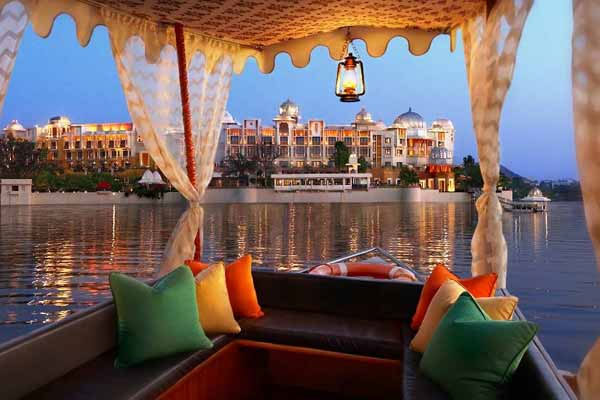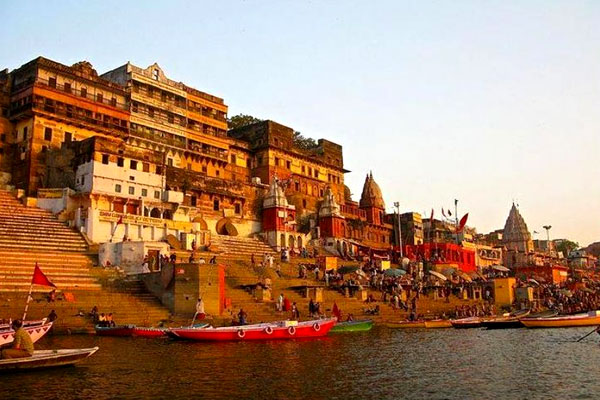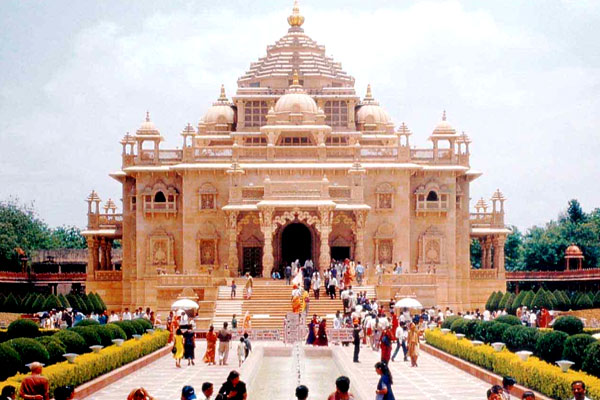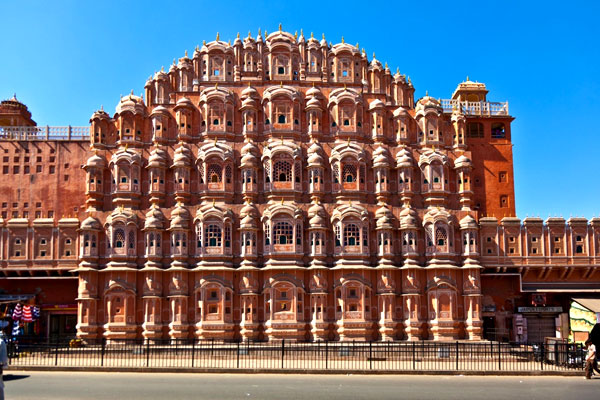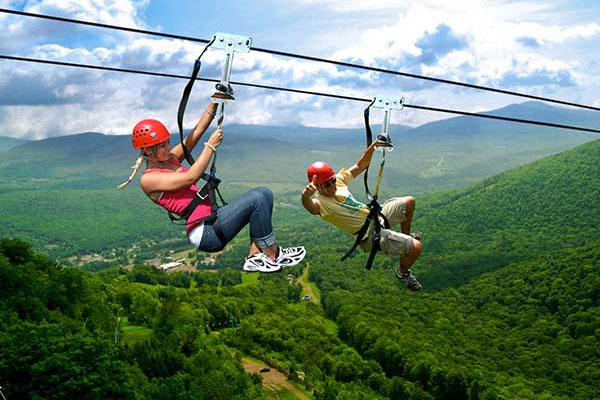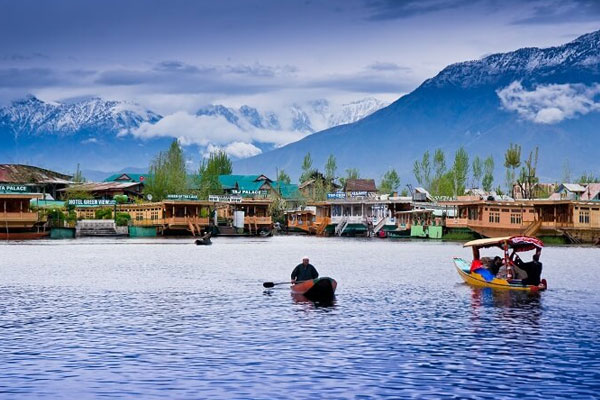Complete Rajasthan Tour
- Home
- Tour Packages
- India Luxury Tour Package
- Complete Rajasthan Tour
Complete Rajasthan Tour
Covered : Delhi - Agra - Ranthambore National Park - Jaipur - Samode - Nimaj - Udaipur - Jodhpur - Jaisalmer - Bikaner - Delhi- No of Nights: 19
- No of Days: 20
The royal state of Rajasthan is a land of golden sands, vibrant colors, varied wildlife, friendly villages and innumerable forts and palaces. The state is one of the most visited destinations in India that is equally popular amidst national and foreign tourists. 20 Days of Rajasthan- Heritage, Wildlife, Rural And Desert Experience is a meticulously planned itinerary that offers you a chance to explore the forts, palaces and havelis, pay homage to the deities at the popular temples, indulge in shopping at the popular bazaars, meet the village locals, have a rendezvous with the exotic wildlife, enjoy camel safaris and elephant ride, and much more. The itinerary also includes a visit to the World Heritage Sites and other attractions of Delhi and Agra.
Day 1-3: New Delhi
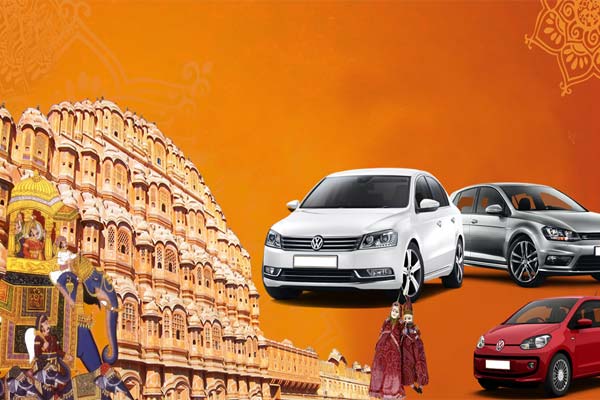
On your arrival in Delhi, meet our tour representative who would help you with an assisted transfer to a luxury hotel in the city. Complete the check-in formalities and settle in your room. The day is at leisure. You can explore as per your liking. Day 2 and 3 are for visiting the tourist attractions of Delhi, a mix of heritage buildings and modern rises. Evenings can be spent shopping at the popular markets of Delhi such as Connaught Place (CP), Chandni Chowk, Karol Bagh, Dilli Haat, Sarojini Nagar, Khan Market etc.
A potpourri of cultures and the melting point of country's politics, India's capital, Delhi city is a true charmer, alluring visitors from all around the globe, for both work and leisure. In the course of its recorded history, the city has been under the reign of rulers belonging to different dynasties. These rulers of Delhi commissioned a number of monuments, which today are the prized possession of the city.
During the sightseeing tour of Delhi, you visit the attraction of Old and New Delhi, covering highlights like Qutub Minar, Rajghat, Red Fort and so on.
A 73 meter high minaret, Qutub Minar is a UNESCO World Heritage Site, which also boasts of being the highest tower in India. Built in red sandstone, this minar is a stunning mishmash of Indo-Islamic Afghan architecture styles. Qutub Minar was built in the 1192 on the orders of Qutab-ud-din Aibak. Two floors were later on added by his successor, Iltutmish. Qutub Minar has five floors with each having a different design on it.
Red Fort, another World Heritage Site, was the residence of India's Mughal emperor for around 200 years, till the year 1857. Shah Jahan had commissioned the constructed of Red Fort in the year 1648. Then known as Shahjahanabad, this fortified palace, built in red sandstone, was his capital. This daunting Mughal structure becomes the venue of the celebration of India's independence when the Prime Minister of India, hoists the national flag on its main gate.
Do not miss Cycle Rickshaw ride in the popular lane markets of Old Delhi includinh Khari Baoli, Chandni Chowk, Chawri Bazzar, Nai Sarak and more. These wholesale markets are stuffed with all the goods that one can think of. The shops here sell clothes, books, decorative items, wedding garments, wedding cards, household items, spices, imitation and precious jewellery and more.
Overnight stay.
Day 4: Agra
Today, you get transferred to the Mughal city of Agra, by road. Lying on the banks of River Yamuna, Agra boasts of being home to a number of magnificent Mughal structures that are World Heritage Sites. One can still experience Mughal feel in the culture of the city. The magical charm of Agra allures tourists from all around in huge numbers. The bustling markets of Agra such as Sadar are a must-visit. On reaching, check-in to a luxury hotel of Agra. Check-in is followed by the city tour of Agra including Taj Mahal, Agra Fort, Fatehpur Sikri, Sikandara and more .
The World Heritage Site, Taj Mahal is one of the Seven Wonders of the World, which is placed on the eastern banks of River Yamuna. An epitome of love, this white-marble mausoleum was commissioned in 1632 by Mughal Emperor Shah Jahan in the memory of his beloved wife Mumtaz Mahal. The construction of Taj Mahal took a span of 22 years and it is a stunning blend of Islamic, Mughal, Ottommon Turkish, Indian and Persian architectural styles.
Agra Fort or Red Fort of Agra also features in the list of UNESCO World Heritage Site and is placed on the right banks of Yamuna River. Belong to the 16th century, this magnificent fort was constructed by Emperor Akbar and later additions were made by Emperor Shah Jahan. The fort complex is a combination of red sandstone and white marble and houses a number of beautiful structures including palace, gardens, mosques etc.
Around 40 km from the city, Fatehpur Sikri is another World Heritage Site of Agra, which is another Mughal marvel. Emperor Akbar built this walled city in the honor of Sufi Saint Salim Chishti. Constructed between 1571 and 1585, it became the Mughal capital for around 10 years but was later abandoned due to shortage of water. The complex is a collection of a number of structures such as Jodha Bai Palace, Buland Darwaza, Jama Majid, Diwan-i-Am, Diwan-i-Khas, Tomb of Salim Chishti, Paanch Mahal and more.
There is also an option to embark on Kachhpura Walk. Kachhpura is an ancient Mughal village near Taj Mahal. Have a visit to the lesser-known monuments of Mughal era including Humayun Mosque and then to historical Baoli. Gyarah Sidhi, carved from single stone, on the banks of River Yamuna. Embark on a walking tour of the village and notice the locals indulged in their daily work life. Enjoy a leisure walk in the well-maintained Mehtab Bagh and treat your eyes to the mesmerizing views of Taj Mahal, during sunset.
Overnight stay.
Day 5-6: Ranthambore National Park
Today you start driving Ranthambore National Park – one of the largest and the most popular wildlife reserves in northern India. Afternoon arrival and check-in formalities at a luxury wildlife resort. The rest of the day is at leisure and you can partake in the activities of your interest such as nature walk. A former hunting ground of the Maharajas of Jaipur, Ranthambore is known to be the home to the big cats in decent numbers. Opened between 1st October and 30th June every year, this national park offers Jeep Safari and Canter Safari. Surrounded by Vindhyas and Aravalis hill ranges, Ranthambhore is like an island, covering an area of 392 sq km, flaunting an exotic range of flora and fauna.
During your safari, you can spot a vast variety of animals such as tigers, Common Palm Civets, Nilgai, Chital, Jungle Cats, Common Langurs, leopards, Indian false Vampires, Striped Hyenas, India Mole rats, Common Mongoose, Banded Kraits, Rat Snakes, Cobras, Saw-scaled Vipers, Indian Flying Foxes and so on. Spot the animals roaming around freely in their natural habitat.
The national park is quite popular amidst bird watchers as one can spot around 272 avifauna species including both resident and migratory birds. You can spot colorful birds like Flamingos, Common Kingfishers, Graylag Goose, Cuckoo-Shrikes, Indian Gray Hornbills, Common Kingfishers, Sparrows, Flycatchers, Nightjars, Pigeon, Bulbul, Myenas, Dove, Great Crested Grebe, Egrets, Wood Shrikes etc.
Within the premised of the national park, lies Ranthambore Fort, a majestic structure, belonging to the 10th century. Around 700 feet above the park area, this fort consists of 3 temples, dedicated to Lord Ram, Lord Shiva and Lord Ganesha. The fort is also counted in the list of hill forts of Rajasthan that are UNESCO World Heritage Sites.
Stay overnight.
Day 7-8: Jaipur
In the morning, get transferred to the Pink City, Jaipur. The capital city of Rajasthan state, Jaipur is the largest city too. Founded by Maharaja Sawai Jai Singh in the 18th century, Jaipur is one of the most sought-after destinations in India, visited by national as well as foreign tourists in huge numbers. The bustling markets, rich historical past and its attractions are major crowd pullers.
As you reach Jaipur, complete the check-in formalities at a luxury hotel of the city. The rest of day is at leisure. Indulge in the activities of your interest during the day. Spend the evening indulged in the popular markets of Jaipur such as M.I Road, Bapu Bazar, Kishanpol Bazar etc. get your hands on some amazing stuff such as handicrafts, traditional attires, lac bangles, imitation jewellery, semi-precious stone, Rajasthani textiles, mojris and more.
The next is scheduled for taking a tour of the heritage structures of Jaipur including Amber Fort, Jantar Mantar, City Palace, Palace of the Winds or Hawa Mahal.
Amer fort or Amber fort, around 11 km from the city center, is placed on a hilltop, was constructed by Raja Man Singh I in the year 1592. Opt for an elephant ride to go up to the entry gate of the fort. A blend of Hindu, Muslim and Rajput architectural elements, the fort complex houses a number of structures such as Ganesh Pol, Sila Devi temple, Sukh Mandir, Sheesh Mahal, Tripolia Gate, Man Sing palace and more. It comes under the list of 6 Hill forts of Rajasthan that are World Heritage Sites.
A famous landmark of the city, Hawa Mahal is extremely popular for its distinct and striking honeycomb-like architecture. Constructed in red and pink sandstone, the palace's front has 953 small windows (Jharokhas) from where the royal ladies used to enjoy the hustle-bustle of the city, while staying away from public eye simultaneously. This five-storey structure was constructed in the year 1799 by Maharaja Sawai Pratap Singh. Out of the 5 storeys of the palace, the top 3 have the thickness of a single room but the bottom two have courtyards.
A UNESCO World heritage Center, Jantar Mantar is an observatory that was constructed in the first half of the 18th century. The observatory consists of 20 prime fixed astronomical instruments, made of plaster, brick rubble and bronze. The largest stone sundial in the world, Jantar Mantar was constructed by Rajput King Sawai Jai Singh. This is one of best maintained observatories in India. The instruments here have been designed in such a way that one can see the astronomical positions with their naked eyes.
Stay overnight.
Day 9: Jaipur-Samode
Today in the morning, drive to Samode, by road. Samode is a small village close to Jaipur, which is home to some of the best heritage hotels of Rajasthan. As you reach, complete the check-in formalities at any of the luxury heritage hotels of Samode and experience a regal stay like the Kings and Queens of the region. These heritage properties are the residencies of the Maharjas of the region that have been converted into heritage hotels, offering all the modern world-class comforts and impeccable hospitality services, amidst a grand and luxurious ambiance.
After completing the check-in formalities, settle in your rooms. Later, leave the hotel for exploring the village life from close quarters while riding on a camel's back. Just hop onto a camel's back and treat your eyes to the contrasting views of locals clad in colorful clothes with the backdrop of sandy landscape. If you want, you can interact with the locals to know more about their culture and traditions. Spot the people indulged in their daily activities. Some of the villagers might offer their sumptuous home-cooked local Rajasthani delicacies.
Overnight in Samode.
Day 10-11: Samode- Nimaj
On day 10 of the tour, you get transferred to a small village, Nimaj that is quite close to Pali in the central Rajasthan area. This village is known for its traditional art and handicrafts. Originally the place was the hunting ground of the royal family, which now has been turned into a reservoir. Day 10 and 11 are for exploring the region. As you reach Nimaj, check-into a luxury resort. Today, you can explore the village on your own. Take a walk in the nearby area, visit the farms of the villagers, interact with them to know more their lifestyle, tradition and culture.
The next day you can visit the reservoir where rainwater is stored and used for the purpose of irrigation. Surrounded by hillocks and farmlands, the area around the lake allures several resident as well as migratory birds, making it a popular place amongst bird watching enthusiasts. In the evening, you can relax in your resort and enjoy the facilities offered here. Stay overnight.
Day 12-13: Nimaj-Udaipur
Today, you travel to the 'City of Lakes', Udaipur, by road. On arrival, check-in at the luxury hotel. The rest of the day is at leisure so that you can partake in the activities of your interest. Day 12 and 13 are exploring the tourist attractions here. You can spend the day visiting the popular markets of Udaipur such as Chetak Circle, Hathi Pol Bazaar, Bada Bazaar and more. You can get your hands on puppets, traditional clothes, camel leather items, mojaris, jewellery, handicrafts, tie and dye and bandhni fabrics and more. In the evening, enjoy a boat ride on the serene waters of Lake Pichola while treating your eyes to the beautiful sunset views.
The next day, get all set to visit the city's main attractions such as City Palace and Sahelion ki Bari, Jagdish temple, Lake Palace, Jag Mandir and more. Placed on the eastern bank of Lake Pichola, City Palace complex was commissioned in 1559 by Maharana Udai Singh II as the capital of the Sisodia Rajput clan. In the coming 400 years, additions were made the other rulers. The complex is a mix of Mughal, European and Rajasthan architectural styles. The palace complex comprises 11 small palaces and other structures. The interiors of the palace complex are adorned with carvings, paintings, in-lay work, murals, mirror work, marble work and semi-precious stones etc.
One of the most popular temples of Udaipur, Jagdish temple is an Indo-Aryan architecture. The temple was built in 1651 by Maharana Jagat Singh. Dedicated to Lord Vishnu, the temple is probably the largest temple of Udaipur. This 3-storey temple has beautifully-painted walls, decorated ceilings, huge halls and delicately-carved pillars. The idol of the Lord is made from a single piece of black colored stone. The temple complex has temples of other deities also including Lord Shiva, Sun God, Lord Ganesha and Goddess Shakti.
Day 14-15: Jodhpur
Get transferred to the Blue City- Jodhpur today, by road. On reaching, check-in at a luxury hotel of Jodhpur. Day 14 and 15 are for exploring this amazing city Jodhpur that is also called the Sun City. A popular destination of Rajasthan, it boasts of a mesmerizing landscape. After completing the check-in, you are free to explore the city on your own. You can visit the popular markets of the city to collect souvenirs including Jodhpuri Jutties and pants, tie and dye fabric, handicrafts, jewellery, lac bangles, embroidered shoes, leather items etc. visit Nai Sarak, Clock Tower market, Mochi bazaar and Sojati Gate.
Jodhpur, the second largest city of the state, is home to forts, palace and temple, set in the backdrop of the Thar Desert. A former princely capital state, Jodhpur was established in 149 by Rao Jodha, a chief of the Rathore clan. This city was constructed in the form of new capital state of the Marwars that would replace the old capital of Mandore. The remains of the ancient capital today can be seen as Mandore Gardens. The city is called Blue City because a large number of houses in the old part of the city are blue in color.
The next day is scheduled for sightseeing including the main tourist attractions of Jodhpur such as Mehrangarh Fort, Jaswant Thada, Umaid Bhavan Palace, Mandore Garden and Rai ka Bag Palace and more.
One of the largest forts in India, Mehrangarh Fort is located on a hilltop, 150 m high. Established in the year 1459 by Rao Jodha, the fort is one of the most popular tourist attractions of Jodhpur. Bordered by daunting huge thick walls, the fort complex has various palaces inside known for detailed carvings and huge courtyards. This colossal structure today is known as one of India's best preserved forts. The main entrance is Jaipol, the northeast gate. An important building inside is the Mehrangarh Museum that has several galleries and a huge collection of paintings, costumes, arms & armors, textiles, decorative items, costumes and more.
An architectural masterpiece, Jaswant Thada is a royal memorial of the Rathore clan, placed close to the Mehrangarh Fort. Famed as the 'Taj Mahal of Marwar', this royal cenotaph is dedicated to Maharaja Jaswant Singh II, the 33rd ruler of Jodhpur. A popular landmark of the city, it was built in 1899 by Maharaja Sardar Singh for his father. This Rajputana architecture has intricate carvings, white marble sheets and chattris with lattice work. The main memorial looks like temples complete with domes, frescos, pillars and scultures. There are cenotaphs of Maharajas of Jodhpur.
Overnight stay in Jodhpur.
Day 16-17: Jaisalmer
In the morning, you get transferred to the 'Golden City', Jaisalmer, extremely famous for its proximity to the Thar Desert. As you reach Jaisalmer, check-in at a luxury hotel/ luxury desert camp. Take some rest. Later, you are free to spend the day as per your preference. Today and the next day are scheduled for exploring the magnificent Jaisalmer city. You are free during the afternoon and can partake in the activities of your interest. Visit popular markets of Jaisalmer like Manak Chowk, Pansari Bazaar, Sadar Bazar, Sonaron ki Bass to collect for memorabilia such as wooden items, gems, mirror-work items, lamps, tablecloth, textiles etc.
The best way to spend the evening is to embark on a camel safari to explore the thrilling and expansive Thar. Go towards the very popular Sam sand dunes and visit the nearby villages. You can take a halt and interact with the locals, indulged in their daily works. Stay in tents while there is bonfire with dinner accompanied with thrilling folk dance and music. This would be memorable experience. The music will be great and the food lip-smacking.
The next day you go for sightseeing tour of Jaisalmer including its forts and havelis such as Jaisalmer Fort, Patwon-ki-haveli, Nathmal Ji ki Haveli, Salim Singh ki haveli, Bada Bagh, Gadsisar Lake and so on.
One of the world's largest fortifications, Jaisalmer fort is a UNESCO World Heritage Site, under the group Hill Forts of Rajasthan. Fondly called the Sonar Quila by the locals, the fort was erected in the year 1156 AD by the Rajput Ruler, Rawal Jaisal. The huge yellow sandstone structure stands amidst the vast Thar, atop Trikuta hill. Second oldest fort in Rajasthan, it is a blend of Rajputana and Mughal styles of architecture. Raj Mahal (Royal Palace), Laxminath temple and its four huge gateways- Ganesh Pol, Akshya Pol, Suraj Pol and Hawa Pol are a must see attraction.
Patwon-ki-haveli, one of Rajasthan's largest havelis, is a group of 5 small havelis. The construction of the haveli was started by Guman Chand Patwa, who was a wealthy banker took around 55 years to get completed. Additions were done by his sons. The striking shade of gold and the amazing architecture are the main attraction. Jharokhas (windows), gateways, wall paintings, mirror work and archways look extremely stunning. This beautiful piece of architecture is a treat to the eyes.
Overnight stay.
Day 18-19: Bikaner
In the morning, on day 18, get transferred to Bikaner by car. The road from Jaisalmer to Bikaner offers mesmerizing views of splendid landscape of the desert area of Rajasthan. Upon arrival, check-in at the luxury hotel. After completing the check-in, spend the day as per your own liking. Indulge in shopping at famous markets such as Kote gate and M G Road and collecting lovely gifts for your loved ones like miniature paintings, handicrafts, Bikaneri Bhujia, Kundan jewellery, ethnic furniture etc. in the evening, you may go for camel safari, covering the vast expanse of the desert.
Formerly the capital of the princely state of Bikaner, it is the 5th largest city of the state. A less hustled destinations of Rajasthan than Jaisalmer, Bikaner is ideal for those who wish to explore the vast sand patches away from regular tourist chaos. This vibrant city is home to a number of forts, palaces and temples. Placed in the north-western part of the state, Bikaner was founded by Rao Bika Ji in the year 1488 AD.
The next day is scheduled for visiting the attractions of Bikaner including Junagarh Fort, Karni Mata temple, Prachina Museum, Gajner Palace, Bhandeshwar Jain temple etc.
One of India's few forts that remained undefeated even after five centuries of their construction, Junagarh Fort is a stunning structure that was constructed between 1571 and 1612 by Raja Rai Singh. The fort complex also has a museum. This red sandstone structure lies in the centre of the city. While the oldest part of the fort was in yellow sandstone the remaining was in red sandstone. The fort was originally called Chintamani and later was renamed as Old Fort. The fort complex has several beautiful structures like Karna Mahal and Phool Mahal. The interiors of the fort are stunning.
Around 30 km away from the main city, Karni Mata temple is a popular Hindu temple in Deshnok, which is dedicated Ma Karni Devi, an incarnation of Ma Durga. The temple is also known as the Temple of Rats, as the temple complex is home to around 20,0000 rats. While devotees from all around the temple to seek the blessing, tourists come here from all around the world, out of curiosity. While the façade of the temple is beautiful in white marble, the doors are in silver. The devotees worship and feed these rats. The idol of Karni Mata is extremely beautiful.
Day 20: Bikaner-Jodhpur Airport- New Delhi
On the last day of the tour, travel from Bikaner to Jodhpur airport to board a flight to Delhi


